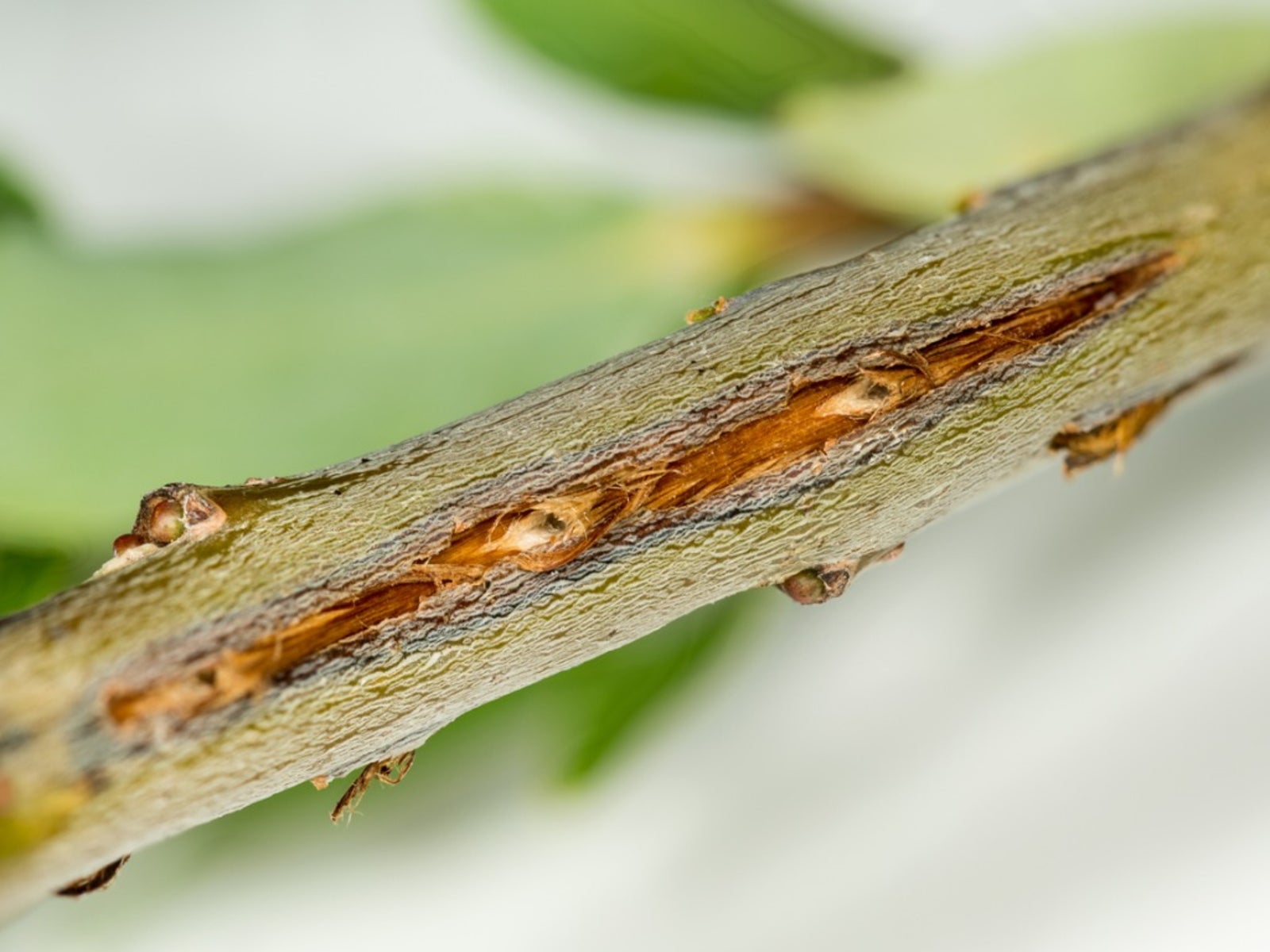Cicada Bugs In Trees: Preventing Cicada Damage To Trees


Cicada bugs emerge every 13 or 17 years to terrorize trees and the people who care for them. Are your trees at risk? Learn to minimize cicada damage to trees in this article.
Do Cicadas Damage Trees?
Cicadas can damage trees, but not in the ways you might think. The adults might feed on leaves, but not enough to cause any serious or lasting damage. The larvae drop to the ground and dig down to the roots where they feed until it's time to pupate. While root-feeding robs the tree of nutrients that would otherwise help it grow, arborists have never documented any damage to the tree from this type of feeding. Tree damage from cicada insects occurs during the egg laying process. The female lays her eggs under the bark of a twig or branch. The twig splits and dies, and the leaves on the twig turn brown. This condition is called "flagging". You can spot flagging twigs and branches at a glance because of the contrast of brown leaves against the healthy green leaves on other branches. Female cicadas are particular about the size of the branch or twig where they lay their eggs, preferring those that are about the diameter of a pencil. This means that older trees won't sustain serious damage because their primary branches are much larger. Young trees, on the other hand, may be so severely damaged that they die from their injuries.
Minimizing Cicada Damage to Trees
Most people don’t want to wage chemical warfare in their own backyard to prevent tree damage from cicada insects, so here’s a list of prevention measures that don’t involve the use of insecticides:
- Don't plant new trees within four years of the cicadas emerging. Young trees are at high risk, so it's best to wait until the danger has passed. Your Cooperative Extension agent can tell you when to expect the cicadas.
- Prevent cicada bugs in small trees by covering them with netting. The netting should have a mesh size no longer than one-quarter inch (0.5 cm.). Fasten the netting around the trunk of the tree just below the canopy to prevent emerging cicadas from climbing up the trunk.
- Clip off and destroy flagging damage. This reduces the population of the next generation by eliminating the eggs.
Sign up for the Gardening Know How newsletter today and receive a free copy of our e-book "How to Grow Delicious Tomatoes".

Jackie Carroll has written over 500 articles for Gardening Know How on a wide range of topics.